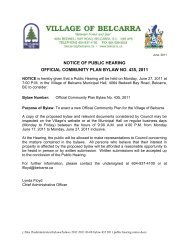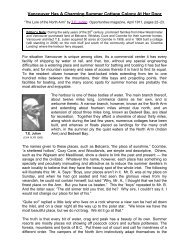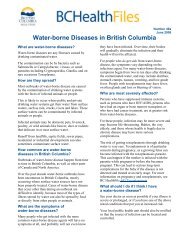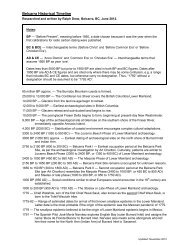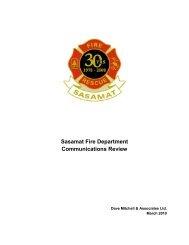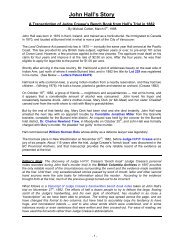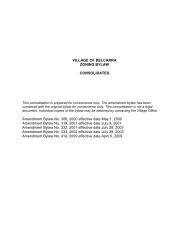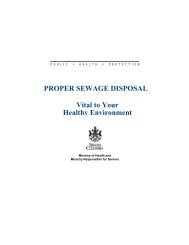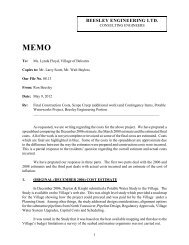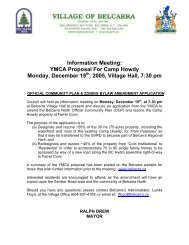Metro Vancouver's Watershed Management Plan
Metro Vancouver's Watershed Management Plan
Metro Vancouver's Watershed Management Plan
You also want an ePaper? Increase the reach of your titles
YUMPU automatically turns print PDFs into web optimized ePapers that Google loves.
The communication and education program will include the following<br />
activities:<br />
‣ public tours of the watersheds;<br />
‣ public review and input on implementation plans;<br />
‣ field trips for the public to view proposed management activities;<br />
‣ participation of community watershed stewardship groups;<br />
‣ guidelines to facilitate research in the watersheds; and<br />
‣ a watershed data and information web site on the internet.<br />
‣ GVRD education resources and programs.<br />
8. <strong>Watershed</strong> Security<br />
Objective: Reduce the risk from microbiological or chemical<br />
contamination and the risk of fires by only allowing access to persons<br />
conducting activities previously authorized by the GVRD.<br />
Public access will be granted through watershed tours, academic projects<br />
and other initiatives pre-approved by the Board. Controlling access into the<br />
watershed is strongly supported through public opinion polls.<br />
Security procedures are in place to minimize the risk of unauthorized entry<br />
into in the watersheds. The entrances to the watersheds are gated and each<br />
watershed is patrolled. Patrol persons provide a point of contact in the<br />
watersheds for emergencies, accidents and communication. Sanitary<br />
facilities will continue to be provided and maintained at all work sites in the<br />
watersheds.<br />
9. Emergency Preparedness<br />
Objective: Execute an emergency management program to minimize<br />
potential threats involving the watersheds and adjacent lands.<br />
The emergency management program will be based upon a foundation of<br />
threat identification, risk assessment and impact analysis. For example,<br />
portions of the watersheds experience landslides and wildfires that have a<br />
range of potential consequences to public safety, water quality and water<br />
supply infrastructure. In addition, an emergency procedure is in place to<br />
respond to unauthorized activities. The foundation of the emergency<br />
management program will be site specific to reflect the geography,<br />
topography and land uses in and adjacent to each watershed. The<br />
emergency management program will include the following activities:<br />
‣ produce a complete list of threats identified from potential hazards or<br />
perils;<br />
‣ conduct risk analysis to determine the likelihood of an occurrence;<br />
13 W ATERSHED M ANAGEMENT P LAN



